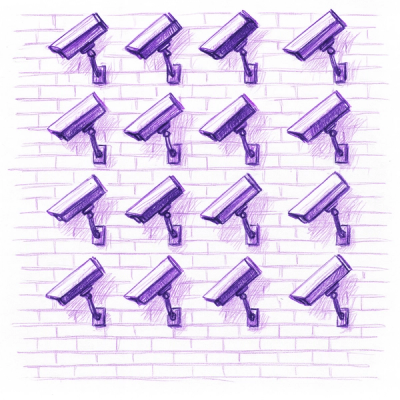django-content-gallery
.. image:: https://travis-ci.org/Kemaweyan/django-content-gallery.svg?branch=master
:target: https://travis-ci.org/Kemaweyan/django-content-gallery
.. image:: https://coveralls.io/repos/github/Kemaweyan/django-content-gallery/badge.svg?branch=master
:target: https://coveralls.io/github/Kemaweyan/django-content-gallery?branch=master
django-content-gallery is a Django application that allows to attach a collection
of images to objects of any models in you Django projects. It also allows you easily
add and remove images, re-attach images to another object (i.e. move an image to another
collection) and change an order of images in the collection as well.
The django-content-gallery creates 5 images with different sizes for each uploaded image:
- a large image viewed in the gallery for users with high-resulution displays
- a small image viewed in the gallery for users with low-resulution displays
- a large preview image used in a preview
- a small preview image used in a small preview
- a thumbnail viewed in the list of available images
Requirements
- Python 3.4+
- Django 1.10+
- Pillow 3.0.0+
- python-magic 0.4.2+
- awesome-slugify 1.6+
- django-admin-jqueryui112 1.12.1+
.. NOTE::
Windows users should also copy magic1.dll, regex2.dll and zlib1.dll onto
the PATH. These libraries are required by the python-magic package and could be
downloaded on the File for Windows <http://gnuwin32.sourceforge.net/packages/file.htm>_
official page.
Installation
To install the django-content-gallery type following command:
.. code-block::
$ pip install django-content-gallery
Then add the content_gallery to INSTALLED_APPS in the settings of your project and the
admin_jqueryui to enable sorting images in the admin panel:
.. code-block::
INSTALLED_APPS = [
...
'content_gallery',
'admin_jqueryui',
]
Add the content_gallery.urls to the urls.py of your project (you could use any
URL pattern, not only ^content_gallery\):
.. code-block::
urlpatterns = [
...
url(r'^content_gallery/', include('content_gallery.urls')),
]
Create tables in the database using the migrate command:
.. code-block::
$ python manage.py migrate content_gallery
Now the django-content-gallery is ready for use!
Configuration
To change settings of the django-content-gallery set the CONTENT_GALLERY dict
in your settings.py module. The dict could contain following items:
-
image_width - the target width of the large image
-
image_height - the target height of the large image
-
small_image_width - the target width of the small image
-
small_image_height - the target height of the small image
-
thumbnail_width - the target width of the thumbnail
-
thumbnail_height - the target height of the thumbnail
-
preview_width - the target width of the large preview
-
preview_height - the target height of the large preview
-
small_preview_width - the target width of the small preview
-
small_preview_height - the target height of the small preview
-
path - the subdirectory in the MEDIA_ROOT where image files would be stored
Default values of these settings are
- image_width = 752
- image_height = 608
- small_image_width = 564
- small_image_height = 456
- thumbnail_width = 94
- thumbnail_height = 76
- preview_width = 376
- preview_height = 304
- small_preview_width = 141
- small_preview_height =114
- path = 'content_gallery'
You could change some of these settings and keep the rest undefined in you settings.py,
in this case the default values would be used instead:
.. code-block::
CONTENT_GALLERY = {
"image_width": 1024,
"image_height": 768,
}
This code changes size of the large image only, the rest of settings values would be default.
Usage
To make your models able to attach a gallery, use the ContentGalleryMixin in
models you want to use the content-gallery with:
.. code-block::
from django.db import models
from content_gallery.models import ContentGalleryMixin
class YourModel(ContentGalleryMixin, models.Model):
...
Also to be able to edit attached image collection on the admin page of your model,
you need to add the ImageAdminInline to inlines of your model admin. Add following
code to your admin.py
.. code-block::
from django.contrib import admin
from content_gallery.admin import ImageAdminInline
from . import models
class YourModelAdmin(admin.ModelAdmin):
inlines = [
ImageAdminInline,
]
admin.site.register(models.YourModel, YourModelAdmin)
Now the django-content-gallery is available for your models. Then you need to add the
content-gallery to your pages.
First of all add the content_gallery/_image_view.html template to your templates where you
want the content-gallery to be available:
.. code-block::
{% include "content_gallery/_image_view.html" %}
The django-content-gallery uses jQuery within its scripts, so make sure that jQuery is
available on your pages where the content-gallery is used.
To add the gallery related to your objects onto your pages the django-content-gallery provides
two template tags. Those template tags are located in the content_gallery template tag set, so
before use them you should load this set:
.. code-block::
{% load content_gallery %}
The first template tag named gallery_preview adds the large preview. It uses one argument which
is your object. This tag is meant to be used generally in templates of detail views:
.. code-block::
{% gallery_preview your_object %}
This code adds the preview widget that shows a preview of the first image related to the object.
The gallery_small_preview tag adds a small preview onto the page, it uses such object as an
argument as well, and is meant to be used generally in templates of list views:
.. code-block::
{% gallery_small_preview your_object %}
This code adds the small preview widget that shows a small preview of the first image related
to the object.
Also the django-content-gallery provides a simple template tag named gallery_image_data
that also gets an object as an argument and returns a dict object that contains an object of
the first image and JSON data for constructing a link to the object. You could use this template
tag to construct you own custom widgets.
For more details, see the content_gallery_testapp which is an example of
the django-content-gallery usage.



